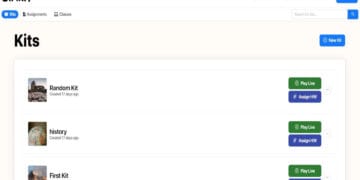Dota 2 is a multiplayer strategy game in the MOBA genre, recognized as one of the most challenging computer games. The in-game economy in Dota 2 is one of the fundamental aspects that can significantly impact match outcomes. Players accumulate gold to purchase powerful artefacts that can strengthen their hero and improve the situation. Understanding how to manage and utilize this resource effectively is crucial for players looking to improve their game. This article will discuss the mechanics of gold acquisition, the role of artefacts, and how the economy shapes strategies in Dota 2.
Understanding Gold Acquisition in Dota 2
As mentioned in the previous paragraph, gold is a crucial aspect of the gameplay mechanics and economy in Dota 2. It can be acquired in several ways, each with its strategic significance. The most common way to earn gold is by last-hitting creeps. Creeps spawn every minute on all lanes, and each creep in the wave provides a certain amount of gold, which can increase significantly over time. Players should focus on mastering the last-hitting skill, which is the foundation of a solid early-game economy. Additionally, heroes receive passive gold over time, a valuable bonus for support players who focus on assisting the team.
Another critical source of gold is hero kills. Eliminating an enemy hero rewards the killer and their teammates with substantial gold. This mechanic encourages aggressive play and teamwork, especially during the early and mid-game stages. In professional tournaments like Dota 2 International, teams focus on team fights, and winning these engagements can significantly boost their economy, enabling them to purchase critical items earlier and gain a strategic advantage.
Moreover, there are neutral creeps in the jungle that players can kill to earn additional gold. Although they don’t provide as much gold as lanedon’tps, they offer a safe way to accumulate resources, particularly for heroes who prefer farming in the jungle rather than contesting the lanes. Gold runes on the map also spawn in the river near the mid-lane and jungle. Controlling these runes is also essential, as Bounty runes provide a steady flow of gold for the entire team.

The Role of Artifacts in Dota 2
Artefacts also play a significant role in Dota 2. They are commonly referred to as items and are the cornerstone of power progression in the game. Each artefact has its characteristics and provides unique advantages, from enhancing a hero’s stats to granting a powerful hero’s abilities. The choice and timing of purchasing items can change the course of a game and help your team secure victory. For example, acquiring core items like Blink Dagger, Black King Bar, or Gleipnir at the right moment can enable a hero to dominate team fights and defend objectives.
Players build their artefacts based on their hero’s strengths and the enemy team’s weaknesses. For instance, in most Dota 2 matches, a carry hero will buy items that increase damage output or mobility, such as Battle Fury, Mjollnir, Manta Style, or Desolator, to clear waves and farm efficiently. Meanwhile, a support hero might focus on utility items like Force Staff or Glimmer Cape to assist their team in battles.
The cost of each item varies, with more powerful artefacts naturally being more expensive. This adds a strategic layer to the game, as players must balance between costly items and contribute to their team’s efforts in fights and push-ups. For example, a player rushing for an expensive item might neglect their team in crucial moments, potentially costing them valuable opportunities.
Impact of the Economy on Strategy
The economy in Dota 2 goes beyond simply accumulating gold and buying artefacts. It directly influences team strategies and decision-making. Teams plan their movements and strategies based on the timing of critical items. For instance, after killing Roshan and acquiring the Aegis of the Immortal, the team needs to capitalize on this advantage quickly to gain the upper hand.
Farming jungle camps, securing bounty runes, and winning team fights can improve a team’s economy while disrupting the team by delaying their item priorities and forcing them into defensive positions. Teams that effectively manage their economy can snowball their advantage, systematically depriving the enemy of resources and pushing towards their base, ultimately leading to victory for your team.
Importance of Positioning and Resource Allocation
Positioning on the map is crucial for maximizing gold income, minimizing losses, and building a solid strategy. Heroes are assigned lanes according to their roles, each performing specific functions. Supports play a role in aiding the team; the offlaner acts as a backbone, the midlaner gains more experience and scales their abilities, while the carry focuses on farming to obtain critical items. This most efficient role distribution helps the team maintain a strong economy, acquire powerful items, and win team fights.
Additionally, the proper allocation of resources can prevent the enemy team from gaining a foothold in the game. Disrupting the enemy’s farming or winning the mmidcarry’sancreate a snowball effect, where the economic disparity becomes too great to overcome. Therefore, the team must focus on both positioning and adequate economic growth. The teams that excel often coordinate well and ensure that all players acquire the necessary resources to contribute to the team’s success.
Conclusion
The eecoteam’snDota 2 is a complex and multifaceted system that influences all aspects of the game. This text discusses how gold is earned and spent, the strategic impact of item choices, and power spikes. Understanding how to manage this resource is crucial for success. Whether you are a beginner or an advanced player in Dota 2, mastering the economic aspects of the game will help you improve your gameplay and increase your chances of winning.



























